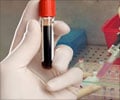Study sees surge of HIV cases among individuals 50 and older over the course of the epidemic.

According to a 2005 Centers for Disease Control and Prevention report, individuals over 50 remain a relatively small segment of those at-risk group for sexually transmitted diseases, with four times as many HIV diagnoses occuring in people ages 25 to 44. However, by the end of 2007, approximately 131,742 Americans aged 50 and older were diagnosed with AIDS.
But a confluence of conditions has created an environment for HIV to flourish in a traditionally low-risk, and therefore overlooked, population.
“Historically when you looked at AIDS diagnoses people 50 and older accounted for 10 percent of all diagnoses,” Zablotsky said. Midlife and older adults have always been present in the epidemic. By 2007, they made up 12.5 percent of all Americans diagnosed with AIDS.
There are approximately 72 million Baby Boomers (individuals born between 1946 and 1964) in the United States today. Americans who make it to age 65 will live longer on average than their counterparts in the industrialized world, and many will remain sexually active well into their golden years thanks to pharmaceuticals (think Viagra) and other health technologies.
Many older Americans come out of lengthy marriages or relationships and re-enter the dating scene. Some are uneducated about HIV/AIDS or have antiquated views about the virus. A huge group of the over-50 crowd never got sexuality education in school.
Advertisement
In the early days of the epidemic, Zablotsky explained, blood transfusion was the primary mode of HIV transmission in older people. Currently, the primary mode of transmission for both older men and older women is through sexual activity.
Advertisement
“When I first started my work, when we were trying to explore the situation with HIV generally, our first approach was to alert people that this [HIV/AIDS] was something that people across the life course need to know about,” she said.
Though the health community has made strides in tailoring education messages, Zablotsky noted, most funding for preventive education in the last 20 years has targeted traditionally high-risk populations, often excluding older adults because of assumptions about their behaviors.
Zablotsky said prevention begins with open conversation, as well as the acknowledgment that humans are sexual beings across the life course. Labels and stigma associated with sexually transmitted disease remain barriers to conversation, but Zablotsky said fewer people might tune out messages that frame sexual health as a lifelong wellness issue.
“What we need to talk about is how you make choices to stay well,” Zablotsky said.
Research conducted by AARP indicates that older patients feel uneasy discussing sexual behavior with their physicians. Conversely, many young doctors are uncomfortable talking about risky sexual behavior with people old enough to be their parents or grandparents.
“One of the things that has been part of the discussion is how we can ask about risk factors when we do other types of screenings. The big thing is to keep asking people about their behaviors regardless of age,” Zablotsky said.
These conversations do not have to take place within the confines of the doctor-patient relationship. Increasingly, public health professionals and advocates are encouraging teens and their parents to sit down and talk to their elders about HIV prevention.
Seventy-two-year-old HIV prevention advocate Jane Fowler made headlines with just such a suggestion. Fowler, who was diagnosed with HIV in her 50s, said people need to get over their embarrassment and start talking. She encourages doctors, friends, kids, grandchildren, and everyone else to check on the HIV prevention knowledge, motivation and skills of their elders.
Zablotsky concurs. “As a sociologist my goal is make conversations a part of our everyday activity,” she said. “The risk does not disappear if we fail to discuss it.”
Source-Newswise















